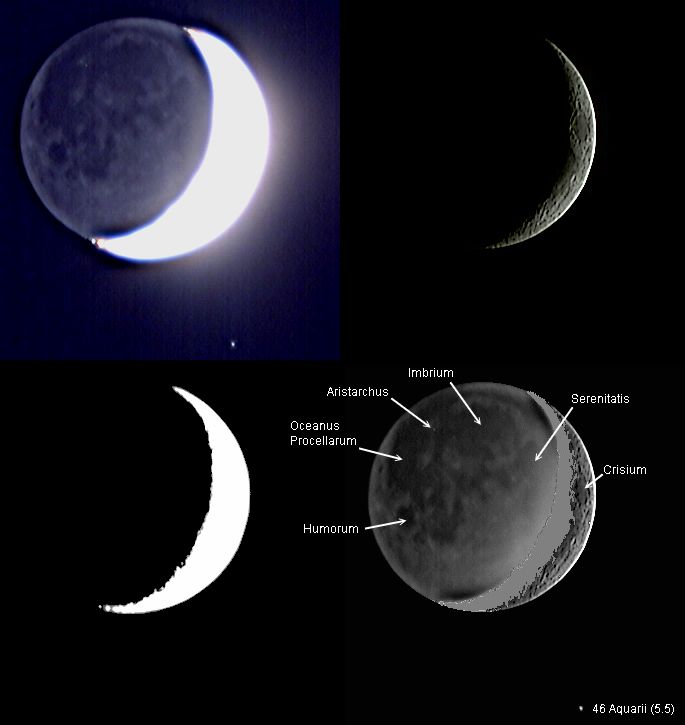

When you look at the full Moon hanging in a dark sky, it is hard to appreciate that it is a very dark body. Only about 7% of the sunlight falling on the Moon is reflected back; this is only about twice as much as is reflected by charcoal. The Earth, on the other hand, is a very bright object with its bright snow fields and white clouds. It is also much bigger than the Moon. The Apollo astronauts commented on the beauty of the Earth as seen from the Moon, but no-one has seen the Earth from the Moon's surface after sunset on the Moon. A full Earth must be a brilliant object and will light up the lunar terrain with what is called Earthshine. (I prefer the word earthlight to correspond with moonlight. Moonshine means something quite different.) It is possible to image the Moon illuminated by earthlight, but the difference between the sunlit part and the earthlit part is tremendous and I doubt there is a camera that could resolve detail in both. The human eye has an amazing dynamic range, and if you look at a thin-crescent Moon hanging in the western sky just after sunset (or in the eastern sky just before sunrise), you will be able to see the earthlit part sometimes refered to as "the old Moon in the new Moon's arms", but you may not be able to distinguish any detail on the earthlit part. A camera can do one, or the other, but not both at once. Below you can see my attempts to show earthshine on the 3.9-day crescent Moon. The top-left picture shows the earthlit part of the Moon but the sunlit part is grossly over exposed and the light not only saturates that part of the image, but spills out to fog an area beyond the image of the Moon. Whether this is scattering light in the optics or leakage of charge in the CCD itself, I do not know. A nearby star is also visible.
The second picture (top-right) was correctly exposed for the sunlit section. The third picture (bottom-left) was exposed to try to delineate the sun-lit section and show the terminator. The area is still over exposed. Finally I have tried to combine the two correctly-exposed pictures and I have indicated the major maria, and one bright crater, that can be distinguished. What is clear here is that picture two does not in fact show all the sunlit section; it doesn't match with the earthlit part and I have filled the missing section grey. The reason for this is that the terminator (the dividing line between the sunlit and dark parts of the Moon) is not sharp. The Sun is not a point source and subtends an angle of about ½° so, as the Sun rises, it does so slowly and the light on the surface increases slowly as it does so. But the missing area here is, I think, too large. There is a particularly interesting illustration by Pete Lawrence in the LPOD for 31st March 2006. He imaged the Moon during a total solar eclipse so the Moon was illuminated by a full Earth. There are other pictures on his web site. (N.B. This opens in a new window.)

Home Back to the Moon